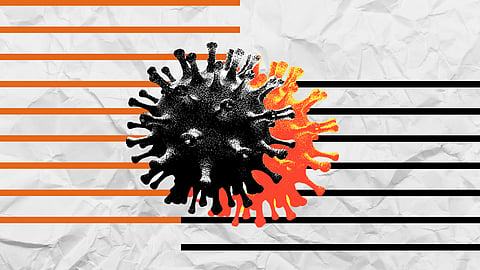

In the last month, there has been an exponential increase in the number of cases in India. What was believed to be the end of the coronavirus pandemic in the country, is now being referred to as the second wave of Covid-19. If studies are to be believed, the second wave of the Covid-19 is different from the first one. The first wave of Covid-19 started in March 2020.
The report was released by The Lancet Covid-19 Commission India Task Force. According to the report, in the second wave, the increase from 10,000 to 80,000 new cases per day from February to April took place in less than 40 days.
This data was being compared to the time it took last year for the same increase in September, which took 83 days.
The other differentiator is that many of the cases that have been recorded for testing positive are asymptomatic or mildly symptomatic. This has relatively reduced the number of hospitalization or fatality rate.
However, the report could not trace the reason for the higher proportion of asymptomatic. But it can be believed it is due to due to better contact tracing (more family members, for example, being tested).
Additionally, since the beginning of the pandemic in March 2020 the overall Case Fatality Ratio (CFR) has been reported to be around 1.3 per cent. However, the CFR of patients who have contracted the virus in 2021 is far less at 0.87 per cent. This comparison tells us that the CFR appears to be lower in the second wave.
Yet, the country is reporting 664 deaths per day. Which could be mostly because of comorbidities. But the fatality numbers lag infection rates, and are likely to rise as infections surge, the report said.
A geographical analysis of the pandemic suggests that the second wave is similar to the first wave. This wave too shows a deeper penetration into tier 2 and tier 3 cities.
According to the Lancet report, there are 215 districts that are among the top 10 per cent in terms of case infections at one point in time over both the waves.
But nine districts (Chennai, Kolkata, Mumbai, Nashik, New Delhi, North 24 Parganas, Pune, Thane, and Solapur), have been part of the top 10 per cent throughout the year. Similarly, the second wave is also more geographically clustered.
The quantity of areas involving the main 50 per cent has dropped from throughout 40 at the hour of the last top, to under 20 at present, showing a considerably more focused pandemic.
Indeed during the main flood over August and September 2020, the quantity of locale for the best 75 per cent of cases was 60-100, while it has been around 20-40 areas during this wave, the report said.
